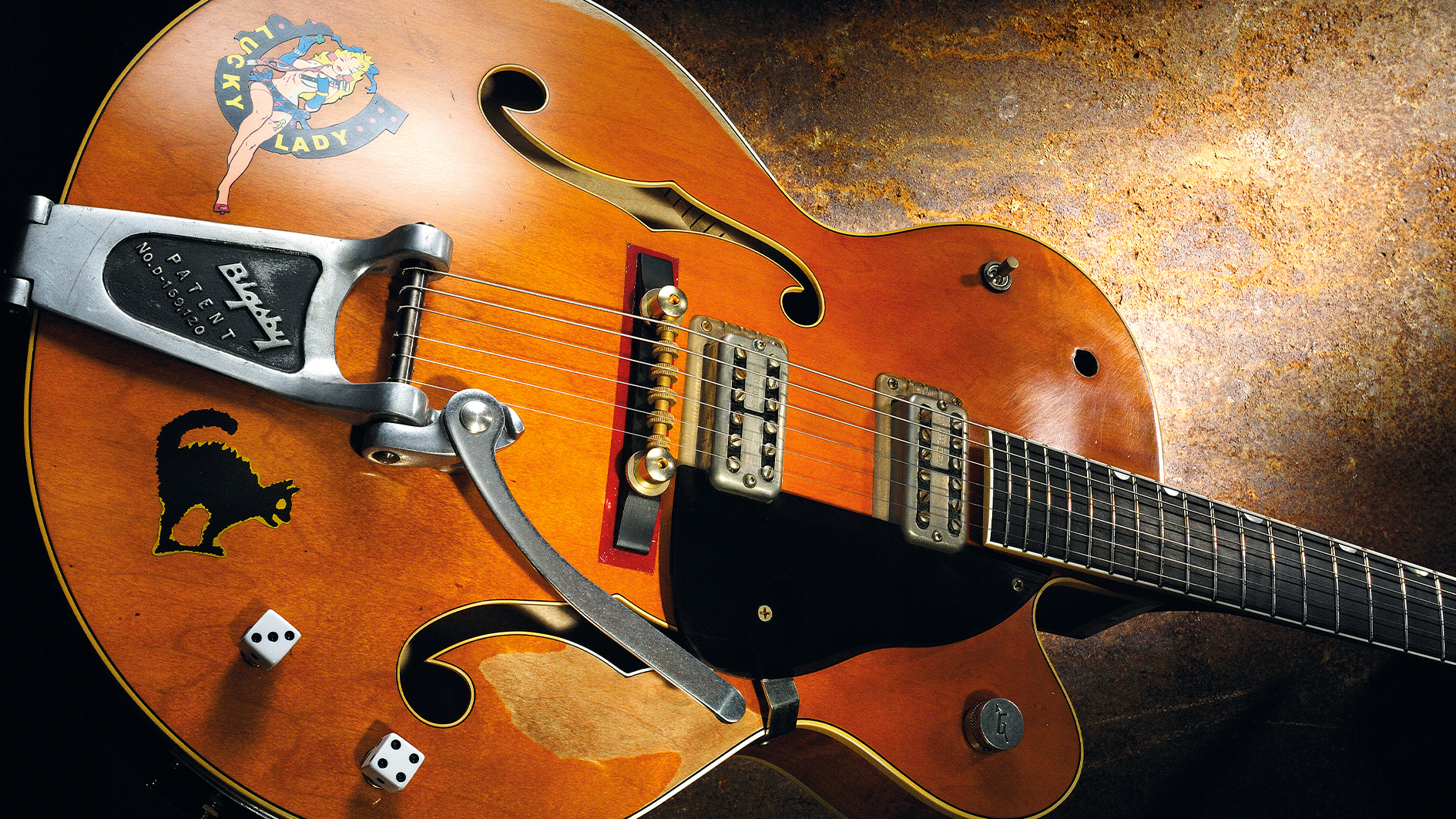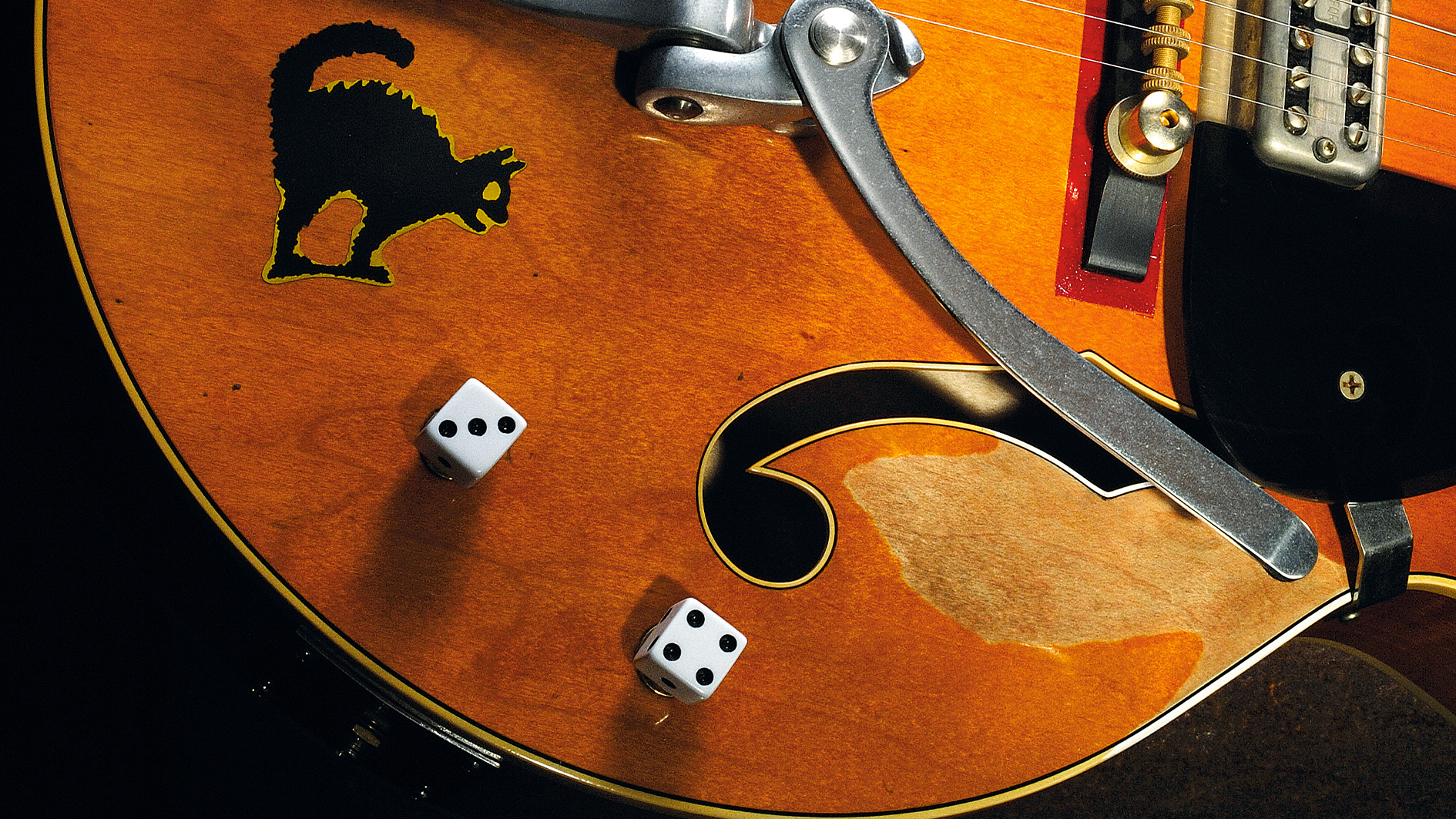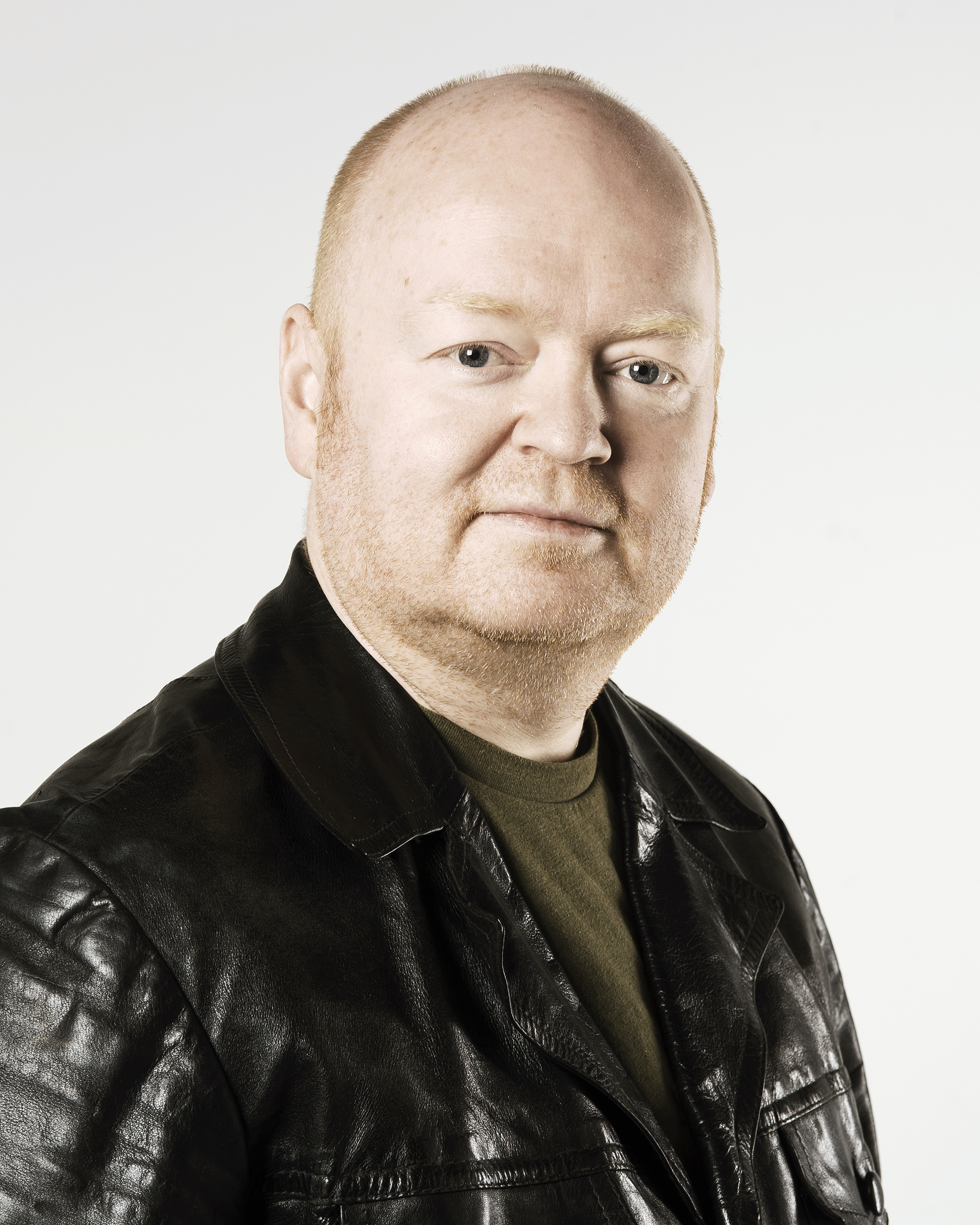The Gretsch G6120: the story of a rock ’n’ roll icon
Built for Chet Atkins, the G6120 found fame in the hands of Eddie Cochran and his disciple Brian Setzer. Here’s the life and times of the six-string rockabilly rebel...

If you happened to have been at home on 19 February 1981 and living in the UK, you were probably watching Top Of The Pops. That night, you would have seen a trio of feral-looking kids blasting through their latest 45.
Something called Rock This Town. It’s a brilliant performance, the sound of rockabilly at a time when New Romantic was all the thing.
Front and centre is this Brian Setzer character, with his sky-high pompadour and a big orange Gretsch G6120 Chet Atkins. First impressions: the kid can really play. And where the hell did he get that killer-looking guitar?
“When I started out with the whole Gretsch thing I had no idea what it would sound like,” says Brian Setzer. “I just wanted to look like Eddie Cochran...”
Constant companion
The Gretsch G6120 might have had Nashville picker and producer Chet Atkins’ name on the pickguard but it was rock ’n’ roll rebel Eddie Cochran who made it famous.
As his near-constant companion, Eddie took his relationship with his guitar to the next level when he made it his dance partner during a performance of Teenage Heaven in the 1959 jukebox flick, Go, Johnny, Go!. It was with him when he was involved in a car crash near Bath in England on 17 April 1960. The Gretsch survived. Sadly, Eddie didn’t. He was just 21.
Eddie bought his G6120 from Bell Gardens Music in Bell Gardens, California, in 1955 when he was 16. He soon personalized the guitar, scraping the gold paint and the Atkins signpost logo off the underside of his guitar’s pickguard, leaving the Perspex translucent.
Get The Pick Newsletter
All the latest guitar news, interviews, lessons, reviews, deals and more, direct to your inbox!
He also replaced the G6120’s neck pickup – a single-coil DeArmond - with a ‘dog-ear’ Gibson P-90.
The G6120 model was launched in 1954, just a year before Eddie bagged his. The double-bound 16-inch wide, 2 7/8-inch-deep laminated maple-bodied guitar was shipped in Amber Red and the now-iconic Orange finishes. You got bound f-holes, of course, either side of a pair of DeArmond single coils.
I bought the thing for 100 bucks and it was all in pieces. I put it together and it was the best thing I ever heard. It still is
Brian Setzer
Electronics consisted of a volume for each pickup, a master tone, and a three-way pickup selector switch. The classic master volume knob was mounted near the cutaway.
Other features included a gold Bigsby vibrato with a fixed arm, an aluminum floating bridge and top nut, Chet’s signpost and signature gold pickguard, and a longhorn steer inlay on the headstock.
The Western vibe continued with celluloid block fingerboard inlays featuring prickly cacti and cattle on the Brazilian rosewood ’board, and the conspicuous ‘G’ brand logo burned into the guitar’s top.
By the middle of 1956, the G6120 was tweaked with plain block fingerboard inlays, a moveable vibrato arm, and a horseshoe motif on the headstock in place of the steer.
A year later, the ‘G’ brand was dropped and the block fingerboard inlays were given ‘humptops’. 1958 was a pivotal year for the G6120, and Brian Setzer. This is the first year we get Filter’Tron humbuckers. An ebony ’board loaded with neo-classical thumbnail inlays also makes its debut.
The ‘love it or leave it’ preset tone switch joins the three-way pickup selector on the guitar’s upper bout joins the party, too. All that changed in ’59 was a Gretsch-stamped V Bigsby, metal to bone nut swap, and the zero fret that Brian took his chisel to on his Stray Cat G6120.

That’s almost all the news that’s fit to print. The only other thing you need to know is that Gretsch reduced the depth of the G6120 in 1960 to the (2.5-inch) measurement you’ll find on Brian’s new signature models.
Eye of the beholder
Most of us get the aesthetic beauty of the G6120. Pete Townshend of The Who didn’t. When Joe Walsh gifted him a vintage model back in the day, he wasn’t especially grateful.
As he remarked to Guitar Player magazine in 1972: “I said, ‘Great, cheers, man’. I was being polite. I opened the case and it was bright orange and I thought, ‘Ugh! It’s horrible, I hate it.’ I went home and went into my studio and plugged it in and it totally wrecked me out. It’s the best guitar I’ve got now.”
At the end of the day, it’s my drill and hammer, it’s my tool. I make a living with it. It’s gotta play in tune. It’s got to travel well
Brian Setzer
Weirdly, Townshend is an Eddie Cochran nut. The Who covered Summertime Blues live on countless occasions. The guitar did earn its keep, however, when it was used on Who’s Next (1971) and ’73’s Mod opera Quadrophenia. He smashed the guitar in 1973, but later had it repaired. He used it almost exclusively in the studio as it wouldn’t stay in tune on stage. Brian Setzer could help him out with that...
45 years on from the purchase of his first ’59 Brian’s loyalty to the G6120 has never faltered. That commitment works both ways.
“At the end of the day, it’s my drill and hammer, it’s my tool,” he says. “I make a living with it. It’s gotta play in tune. It’s got to travel well. That guitar has been through it all with me. I bought the thing for 100 bucks and it was all in pieces. I put it together and it was the best thing I ever heard. It still is.”
Ed Mitchell was Reviews Editor on Total Guitar magazine from 2003, and his guitar-modding column, Ed’s Shed, appeared in print on both sides of the Atlantic (in both Total Guitar and Guitar World magazines). He was the Editor of The Blues Magazine from 2012-16, and a contributor to Guitarist, Classic Rock and Louder. He died in October 2022, aged 52. Between them, the websites Guitar World, Louder and MusicRadar host over 400 of his articles – among them interviews with Billy Gibbons, Paul Weller, Brian Setzer, profiles on Roy Buchanan, Duane Allman and Peter Green, a joint interview with Jimmy Page and Jack White, and dozens of guitar reviews – and that’s just the ones that made it online.
“This would make for the perfect first guitar for any style of player whether they’re trying to imitate John Mayer or John Petrucci”: Mooer MSC10 Pro review
“The most in-demand mods straight from the factory”: Fender’s elevated Player II Modified line brings the firm’s most sought-after guitar upgrades to the masses








![John Mayer and Bob Weir [left] of Dead & Company photographed against a grey background. Mayer wears a blue overshirt and has his signature Silver Sky on his shoulder. Weir wears grey and a bolo tie.](https://cdn.mos.cms.futurecdn.net/C6niSAybzVCHoYcpJ8ZZgE.jpg)

![A black-and-white action shot of Sergeant Thunderhoof perform live: [from left] Mark Sayer, Dan Flitcroft, Jim Camp and Josh Gallop](https://cdn.mos.cms.futurecdn.net/am3UhJbsxAE239XRRZ8zC8.jpg)
